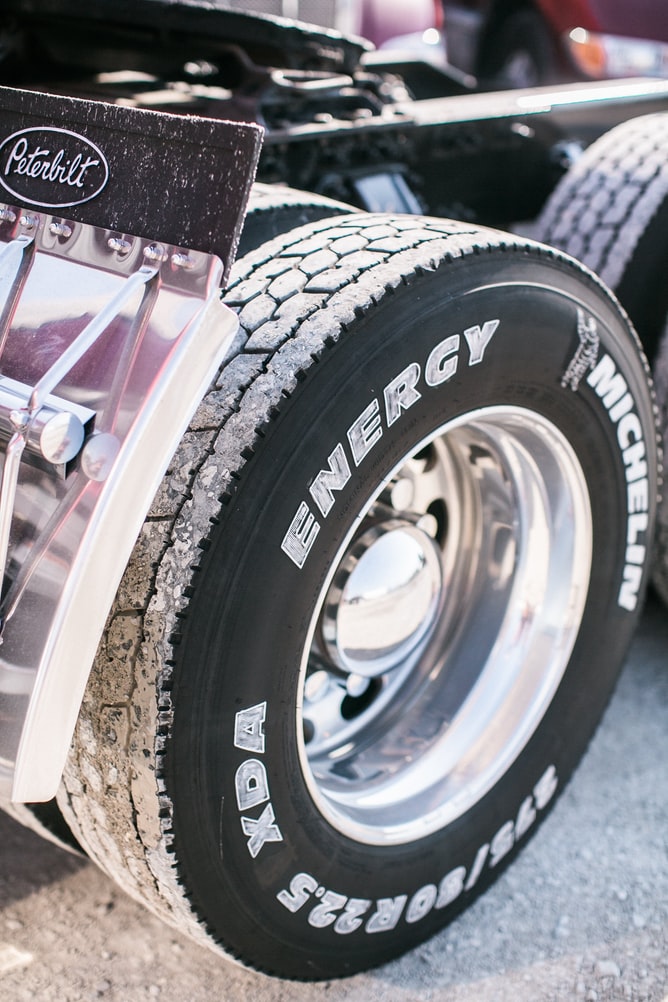SST Wireless
High performance equipment monitoring without the high cost
We sat down with Omar Jabara, Director of Business Development, to learn how SST Wireless got its start and how the company is using wireless cellular connectivity and innovative equipment monitoring hardware to transform industries like mining and transportation.
How did SST Wireless get started?
For SST Wireless, the journey began in 2004, when our team took home second place in the New Ventures BC Competition with a IoT tire monitoring system built for passenger cars.
We knew that our product was technically innovative and offered a lot of value, but also knew that a number of other companies were already fighting over the passenger vehicle category, and that there was a lot of confusion in the marketplace over the right approach and capabilities.
Instead of joining that race, we pivoted to tailor our advanced wireless heat and pressure sensors for commercial and industrial applications. We knew that there was strong demand for ruggedized sensors that could withstand harsh environments and that few competitors could match our solution for capability and value.
We now offer a wide range of rugged, high-performance IoT tire monitoring sensors designed specifically to track the condition of industrial equipment, covering everything from vibration and high temperature to tire pressure.

How do customers use SST Wireless sensors today?

One of our major current use cases is mining. Surface mine operators deploy massive trucks to haul rock and ore to the crushers for processing. Believe it or not, due to the harsh conditions where these trucks operate, tire wear and replacement can end up accounting for a third of the operational cost — sometimes up to $80,000 USD per vehicle or more.
Teaming up with SST Wireless lets mining operators reduce maintenance cost significantly while also extending the functional life of their equipment. Our sensors are now deployed in mines across Canada, Chile, Mexico, South Africa and Mozambique.
On average, mines have reported savings between $5 and $10 million per year as a result of accurate tire pressure, temperature management and preventative maintenance.
These results have led top industry brands like Kal Tire, Translogik and AM Bromley to join the growing list of clients using SST Wireless tire pressure sensors
We also see tremendous potential in industrial and commercial transportation applications. We’re pursuing partnerships with big names like BYD, Volvo, Daimler and Coach, and recently established a partnership with New Flyer Industries, which manufactures a majority of the public transit buses in North America.
What benefits does cellular IoT offer for your customers?
We evaluated a wide range of connectivity solutions and found that LTE was the simplest way for our gateway and sensors to communicate. WiFi, ethernet and PLC just can’t be relied on across long distances, in remote areas, or in rugged work environments.
As an example, customers can use LTE cellular connectivity to trigger automatic tire pressure readings each time a rig is hooked up to a trailer. This allows continuous, automated monitoring of equipment health.

What role does cellular connectivity play in your solution?
SST Wireless relies on the data that their sensors collect to provide insights concerning preventive maintenance, driver behaviour, environmental impact and more.
However, without reliable connectivity, data could fail to send or arrive late, weakening the sensor’s overall performance.
This is especially true for heavy-duty trucks and other equipment that may be traveling between work sites or located underground where deep coverage penetration is needed for sufficient coverage.
How do you see SST Wireless growing in 2020 and beyond?

Most solutions for equipment condition monitoring have been designed around the needs of large industrial enterprises. They’re usually pretty elaborate, typically require support from system integrators, and they’re priced to deliver value in large-scale, long-term implementations.
Small to medium sized organizations have an equally urgent need for equipment monitoring, analytics, and insights; they just don’t have the available capital or in-house resources to take advantage of current solutions. Conventional wisdom holds that the only way to monitor equipment is with expensive, wired solutions that are out of reach for smaller organizations, which is why only about 4% of SMBs have begun any type of IIoT installation.
Our goal is to make equipment condition monitoring available to everyone, regardless of company size. We’re currently working on a number of IIoT solutions that will dramatically reduce initial investment and accelerate ROI for SMBs, including quick-connecting, truly industrial wireless sensors and plug-and-play modules with built-in LTE that can start to monitor equipment within minutes.
Omar Jabara
Director of Business Development
Omar brings over 20 years in business development and start up experience spanning across North America, Europe and the Middle East. His passion for Industry 4.0 has led him to integrate smart procedures in a custom furniture and cabinet manufacturing business started by his family 35 years ago. His other passion is encryption and telecommunications which he incorporated into a company he started, grew and sold in 2017.
